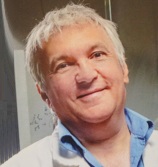Dr Daniel Meyer

- Co-PI (RT1)
- Company: CEA
BIOGRAPHY
Dr Daniel Meyer is Head of the Laboratoire de systèmes HYbrides pour la Séparation (Hybrid Systems for Separation) at the Institut de Chimie Séparative de Marcoule (ICSM) http://www.icsm.fr/lhys.html . He is Research Director at the “Commissariat à l’Energie Atomique et aux Energies Alternatives (CEA)” in molecular and supramolecular chemistry. He is a graduate from the University of Strasbourg, obtained his PhD (1990) under the supervision of J.A. Osborn, then moved for 2.5 years as post-doctoral fellow at the Institute for Transuranic Elements in Germany (JRC). He started his carrier at the CEA in 1993 in the field of actinide recovery and purification from several high activity wastes (solid and liquid) and their reuse for research purposes at the Marcoule French Nuclear site. He was strongly involved in the commissioning of hot shielded cells in a nuclear facility (Atalante) and in the development of the related waste treatment research projects. He has also implemented some fundamental research activities in actinide chemistry and was strongly involved in the setup of the first ACTINET program (2003). He moved to the ICSM in 2005 to set up a transdisciplinary research team in the field of metal separation and hybrid materials in the frame of non-carbon energies. With three collaborators, he has created the LHYS (HYbrid systems for Separation) team in 2014 mainly involved in the development of circular economy from waste recycling leading to high value materials and the development of innovative hydrometallurgical metal separation approaches.
RESEARCH INTERESTS
The separation of species (organic, metallic) by specific metal-assembling (precipitation) or by the use of hybrid organic-inorganic materials such as coordination polymers, metal-organic frameworks
- The control of morphology through organic-inorganic matter (Coordination polymers, metal-organic frameworks as thin layer,…)
- The development of controlled organized nanomaterials more specifically mixed actinides nanoparticles (mixed oxides, oxides-metals…)
- The understanding of the chemical and physical-chemical phenomena which rule the stabilization of metallic species in organic phases at the molecular and supramolecular levels in the frame of liquid-liquid separation, transition metals, lanthanides and actinides.
- The development of high added value materials from waste for energy storage and conversion or catalytic application.
- Common and Nuclear Waste decontamination and recycling is the main applied frame of theses research, i.e. spent fuel recycling, batteries or printed circuit boards.

